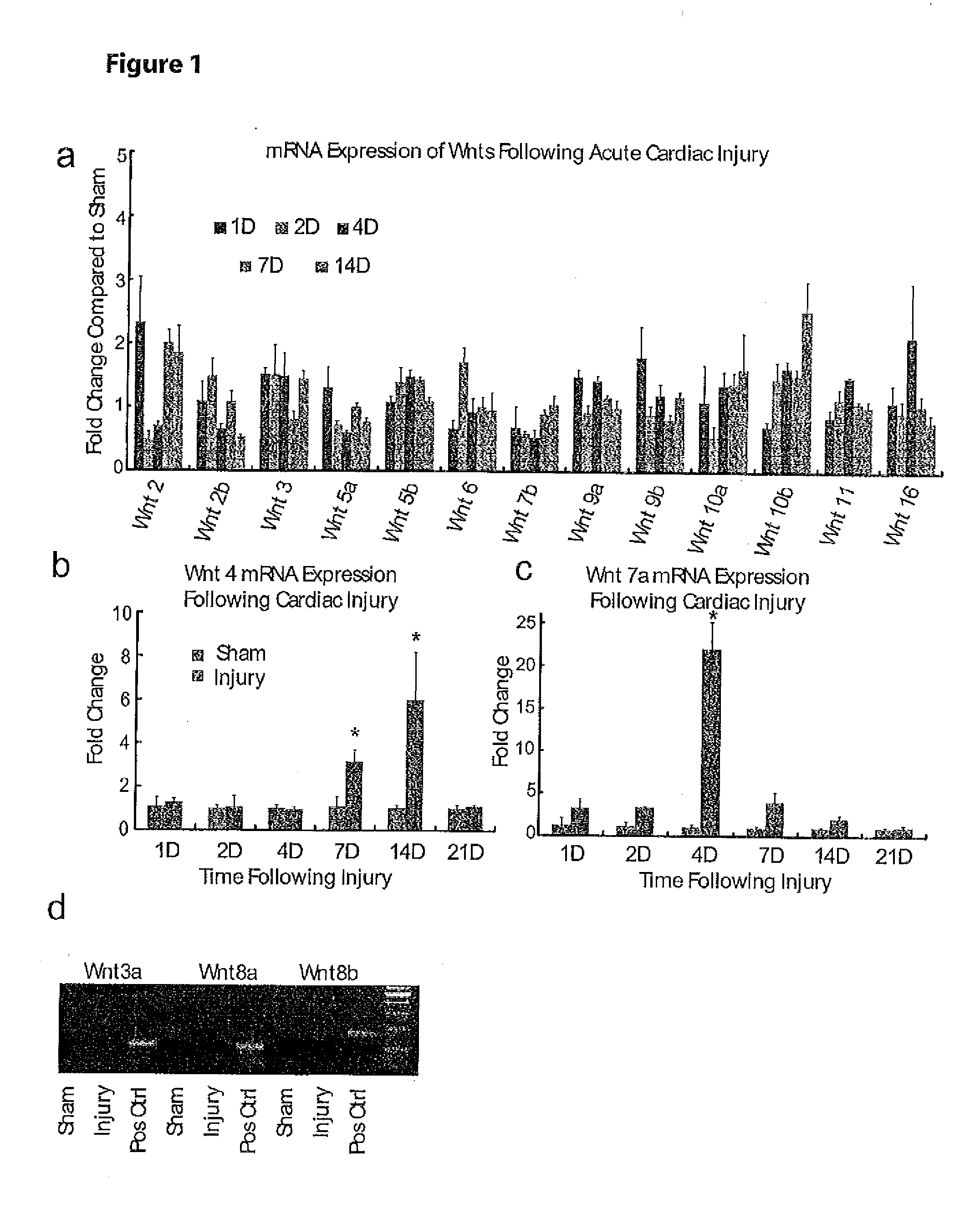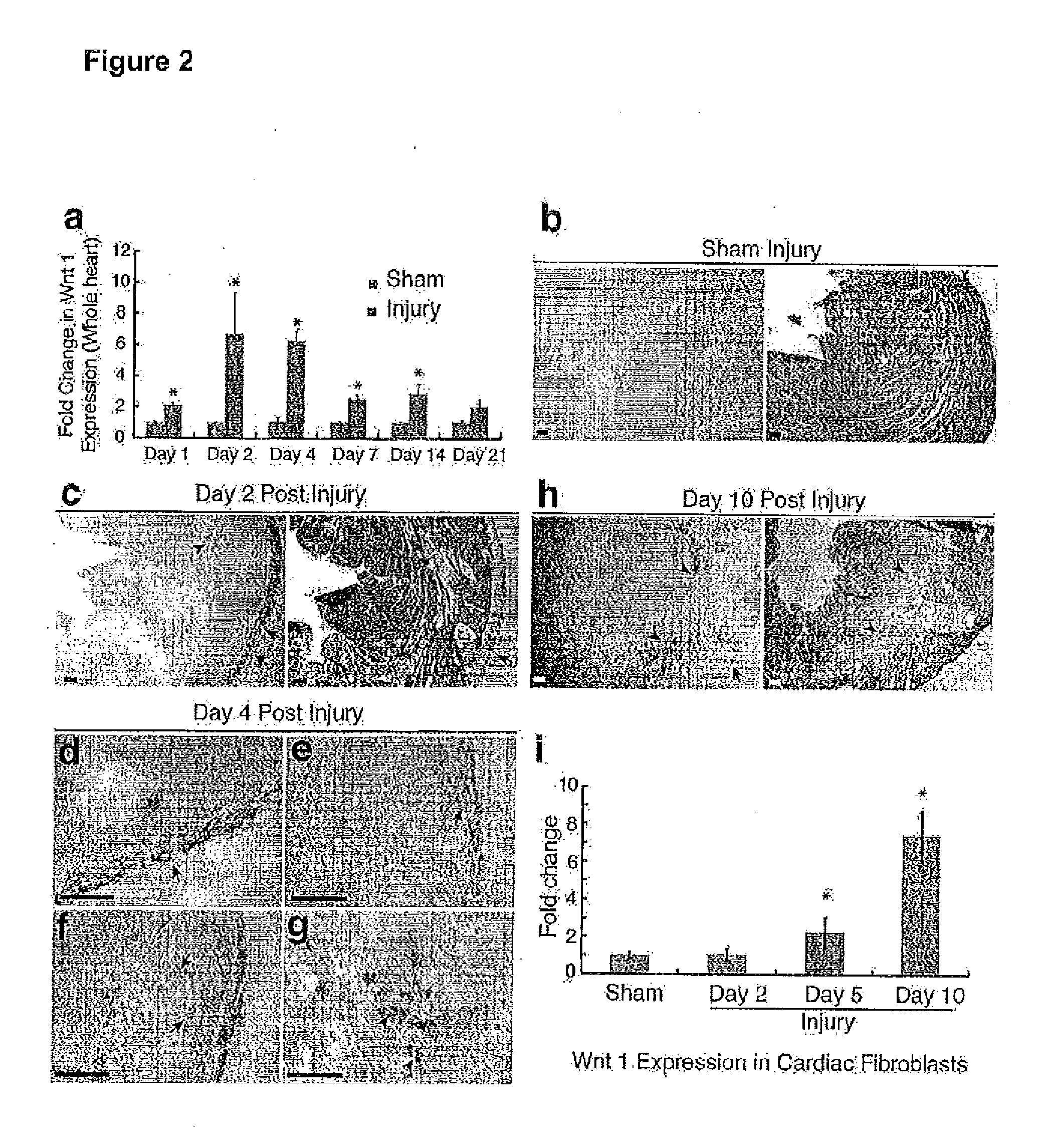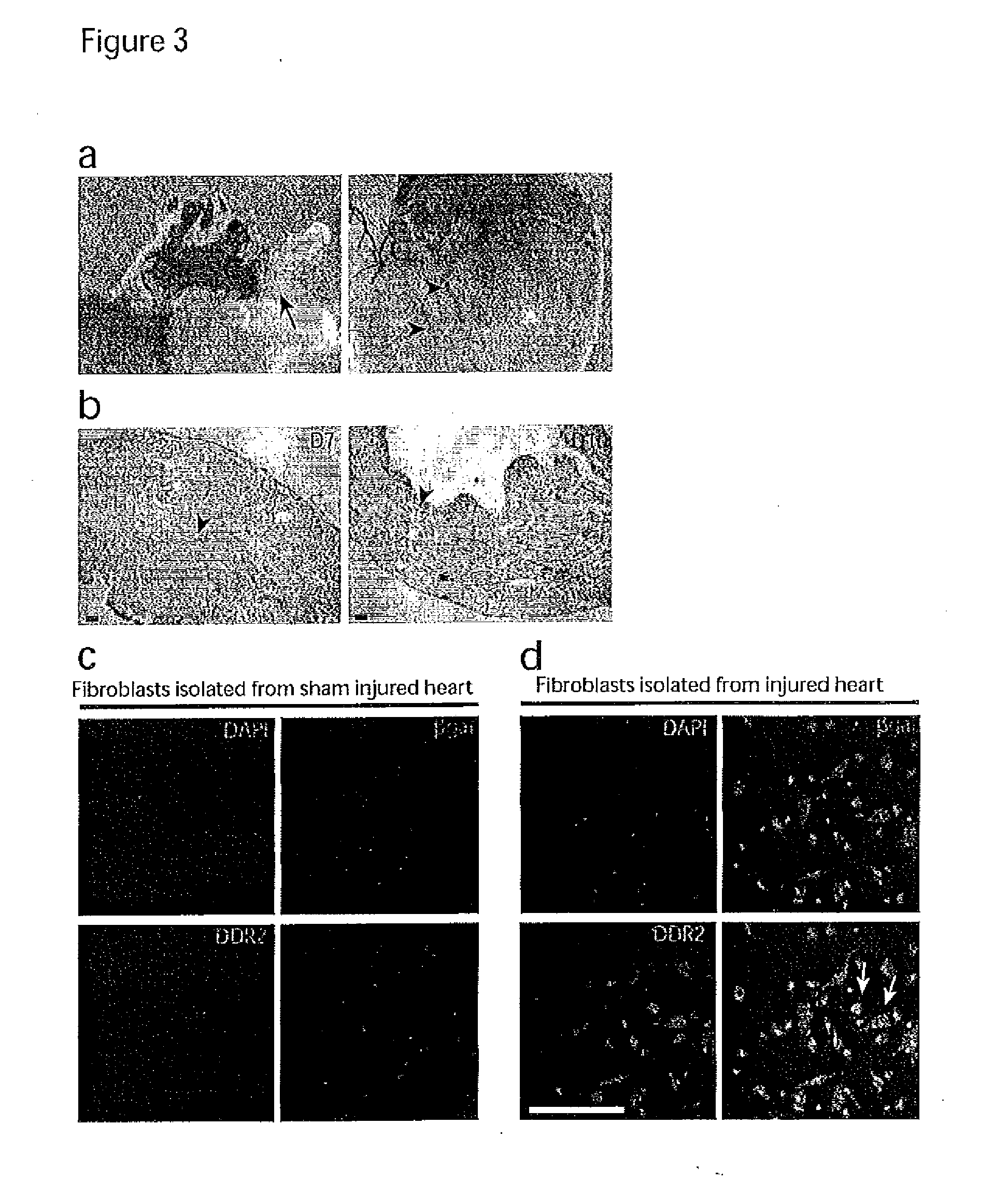Wnt1 for Treatment of Cardiovascular Disorders and Injuries
a cardiovascular disorder and wnt1 technology, applied in the field of wnt1 for treating cardiovascular disorders and injuries, can solve the problems of the inability of the mammalian heart to regenerate cardiac muscle, skin, muscle and nerve damage, and reducing the functionality of the limb, so as to increase the formation of blood vessels and increase the effect of blood flow
- Summary
- Abstract
- Description
- Claims
- Application Information
AI Technical Summary
Benefits of technology
Problems solved by technology
Method used
Image
Examples
example 1
Materials and Methods
Myocardial Injury
[0176]Mice were anesthetized with isoflurane and a left thoracotomy was performed under mechanical ventilation using a volume cycled Harvard Rodent ventilator. Under direct visualization, the pericardial sac was opened and the LAD artery was ligated close to its origin with a 6-0 suture. Myocardial ischemia was confirmed by myocardial blanching as well as ST elevation on continuous ECG monitoring. Following 30 minutes of ischemia, the suture was released to induce reperfusion injury and this was confirmed by decreased ST segment elevation on ECG. Body temperatures of the animals were monitored with a rectal probe and maintained by using a heated surgical platform. The chest wall was closed in layers and the mice were transferred onto a temperature controlled pad for recovery.
[0177]For in-situ hybridization, a mouse Wnt1 cDNA fragment (460-1377 bp) was subcloned into pKanascript vector, linearized with Safi and XbaI to prepar...
example 2
Dynamic Wnt1 Expression from Epicardium to Injury Region
[0187]Changes in expression of all 19 mammalian Wnts by quantitative PCR (qPCR) were screened at different time points following acute ischemic cardiac injury (FIG. 1a). Expression of most Wnts in the heart was low and did not change significantly following injury (FIG. 1a), while some Wnts were not expressed at all (FIG. 1d). Wnt1, Wnt4 and Wnt7A expression significantly increased following injury (FIG. 2a; FIGS. 1b, 1c). Wnt7A exhibited a transient increase and sharp decline (FIG. 1c) while Wnt4 expression peaked at 14 days following injury (FIG. 1b). In contrast, Wnt1 expression increased by 7 fold within 2 days of acute cardiac injury and remained persistently elevated even at 14 days albeit at lower levels (FIG. 2a). As cardiac fibroblast recruitment, proliferation and an acute repair response occurs within the first several days following myocardial injury (Sun of al., Cardiovasc. Res. 46:250 (2000)), focus was placed on ...
example 3
Wnt1 is Expressed by Epicardial Cells and Cardiac Fibroblasts
[0190]To confirm the phenotype of Wnt1 expressing cells, Wnt1Cre transgenic mice were crossed with the lineage reporter Rosa26Rlacz mice (Wnt1 cells express lacZ). Acute cardiac injury was induced in Wnt1Cre / R26Rlacz mice and lacZ expression analyzed in injured hearts.
[0191]Sham injured animals exhibited lacZ expression in the proximal aortic arch (Jiang et al., Development 127:1607 (2000)) as well as in cardiac nerves (Nakamura et al., Circ. Res. 98:1547 (2006)) (FIG. 3a). Sections showed minimal Xgal staining (FIG. 4a) with only rare epicardial and interstitial cells expressing lacZ (FIG. 4b). Wnt1 was dramatically expressed within 2 days of cardiac injury with strong lacZ expression observed in epicardial cells (FIG. 4c) and cells in the myocyte interstitium in the region of injury (FIG. 4d). At 7 and 10 days following injury, Wnt1 cells were predominantly present in the injured region (FIG. 3b). To corroborate that Wnt...
PUM
| Property | Measurement | Unit |
|---|---|---|
| pH | aaaaa | aaaaa |
| thickness | aaaaa | aaaaa |
| lipophilic | aaaaa | aaaaa |
Abstract
Description
Claims
Application Information
 Login to View More
Login to View More - R&D
- Intellectual Property
- Life Sciences
- Materials
- Tech Scout
- Unparalleled Data Quality
- Higher Quality Content
- 60% Fewer Hallucinations
Browse by: Latest US Patents, China's latest patents, Technical Efficacy Thesaurus, Application Domain, Technology Topic, Popular Technical Reports.
© 2025 PatSnap. All rights reserved.Legal|Privacy policy|Modern Slavery Act Transparency Statement|Sitemap|About US| Contact US: help@patsnap.com



